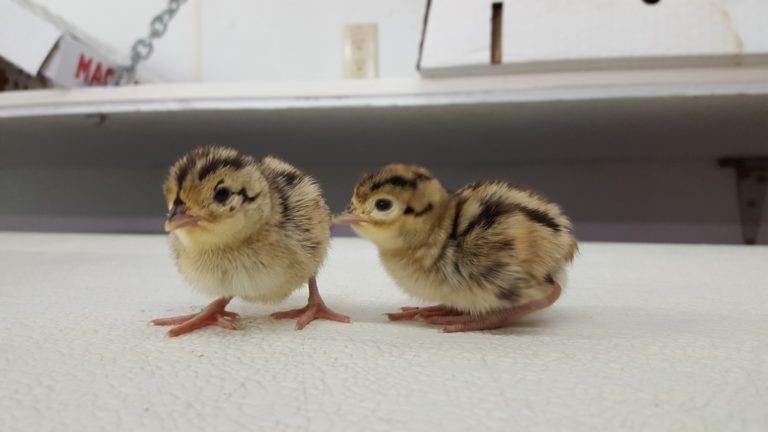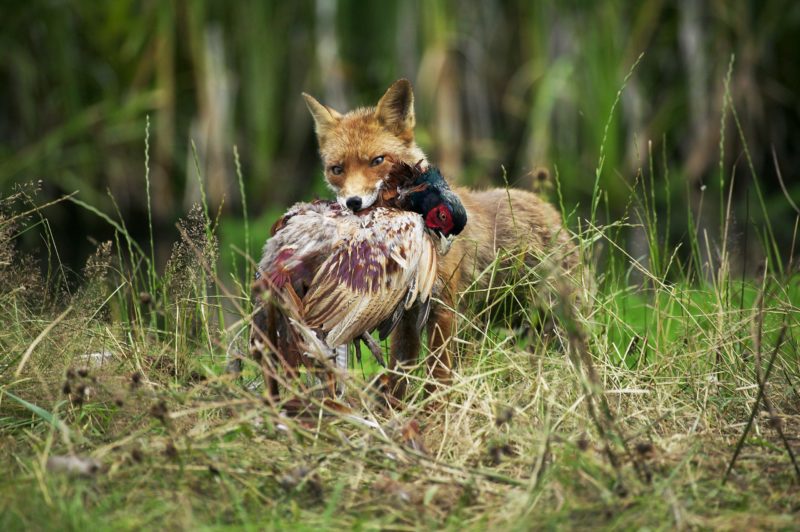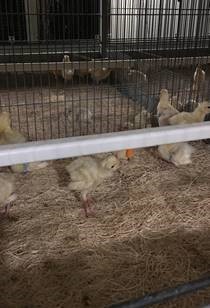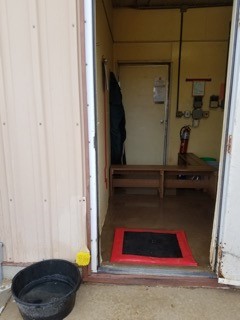Pat Johnson shares how to create a safe environment for your pheasants with a biosecurity plan.
Get Started with Your Biosecurity Plan
A safe and healthy environment for your pheasants is essential. A biosecurity plan is a method used to outline the steps to prevent diseases, parasites, and pests from reaching your pheasants in your particular situation. There aren’t any specific rules for how your plan should look, except to include two sections. The first section of your project describes the way of life on your farm, the culture. When writing about your farm’s culture, you might consider some of these questions:
- What size is your property, and how many buildings will you be using?
- Do lots of people come and go on your property?
- How many and what types of animals live on your farm?
- How many people are helping with chores?
Write down everything that makes your little “slice of life” uniquely yours!
Plan procedures
The next section of your plan includes the procedures you follow to protect your pheasants and any other animals living on your farm. You want to consider a variety of issues affecting the health of pheasants before completing this section of the plan. The following information gives you ideas to think about before you get started.
If writing is not your unique ability, feel free to find a friend to help! You might be able to find a biosecurity template online to give you ideas for formatting your plan. Most importantly, remember that biosecurity is a daily task. If you want to provide a safe environment for your pheasants, or any other poultry on your farm, you have to be diligent about the procedures that keep them healthy.

Pheasant chicks, all fluffy and adorable. Photo courtesy of MacFarlane Pheasants Inc.
The first step you should take is to purchase pheasant chicks, starter birds, or mature pheasants from a reliable source that follows a strict plan to keep their birds healthy. Luckily, pheasants, by nature, have a hardy constitution, but you still need to plan the protocols that protect them.
Diseases
The scariest disease is HPAI (Avian Influenza), informally called bird flu (HPAI). This virus occurs naturally in wild aquatic birds worldwide. It is a very contagious disease and can sicken and kill your pheasants and other poultry on your farm.
The Center for Disease Control and Prevention (CDC) informs us that infected birds can shed bird flu H7N9 virus in their saliva, nasal secretions, and feces. Pheasant infection caused by contact with surfaces contaminated with excretions from infected birds can happen. The last outbreak of this disease was in the spring of 2015 in the Midwest. The CDC and other state agencies keep a close watch on potential outbreaks, so checking various websites should be a part of your plan.
Infected birds can shed Avian Influenza A viruses in their saliva, nasal secretions, and feces. The last outbreak of this disease was in the spring of 2015 in the Midwest. The Center for Disease Control (CDC) keeps a close watch on potential outbreaks so, checking their website can be an essential part of your plan.
The primary diseases that affect pheasants are coccidiosis, a parasitic disease of the digestive tract, and blackhead, a disease caused by a tiny, single-celled organism that is spread to the bird by a roundworm. If either of these diseases affects your pheasants, you can add preventive drugs to feed or water to protect the others. Pheasants and other poultry can be susceptible to other diseases, but excellent sanitation procedures will prevent most illnesses, and a close eye on pheasant behavior will help you recognize illnesses immediately when they occur.
Signs of Illness in Pheasants
-Lethargic birds who are not flying
-Pheasants who appear to be holding their wings down, looking like the weight of their wings are too heavy
-Pheasants who do not react to noise
-Decreased appetite for food and water
-Runny or odd-colored feces
-Swollen hocks, trouble standing, or sick eyes that look swollen or dull
-Panting is a symptom of stress in pheasants. Stressed birds hide so that others cannot get to them. If they move into tight groups or piles, the birds at the bottom can suffocate.
-Finding dead pheasants a couple of days in a row
What to Do When Pheasants Appear Ill
-Look for environmental stressors. Is it too or cold? Are there signs of predators?
-When chicks do not seem healthy, check their bedding for cleanliness. Clean bedding improves air quality. Make sure the temperature in the barn is adequate and airflow is appropriate. Turn up the lights to increase activity and encourage chicks to eat and drink. Be sure to check for improvements as you make changes.
-Identify the illness, treat with appropriate medications, and provide seclusion for the sick pheasants until they are deemed safe from illness.
-If you don’t know what the illness is or what to do about it, call your vet for advice on medication or antibiotics. The longer you raise pheasants, the better you get at identifying the illnesses and knowing what the treatment is. You can also typically get excellent advice from the farm where you purchased your pheasants.
-If you have pheasants that appear ill and don’t know what to do, remove the pheasant to a secure place of isolation and contact your vet for advice. Stop the spread!
Predators
In addition to diseases, the other dangers to pheasants include predators, wild birds, ground animals, and cannibalism. Predators can contribute to both illnesses and the death of your pheasants. Birds of prey, such as red-tailed hawks, turkey vultures, and even bald eagles, prey on pheasants. Wild birds can bring in salmonella. It is vital to eliminate contact with these birds and their feces.

Foxes can kill multiple pheasants in a single attack. Adobe Stock/Brill
Flight pens are covered with netting to prevent wild birds from entering pheasant pens. Foxes, wolves, skunks, cats, and dogs also try to get into pens. Outside pheasant pen inspections ensure that you don’t have breeches in the fencing that cause the loss of pheasants. Also, take great care to keep feed that attracts wild birds and rodents cleaned up and contained.
Cannibalism
Cannibalism is a common problem with pheasants. When you provide plenty of roaming space and excellent ground cover in pens, separate hens from roosters, and use peepers, you can curtail these behaviors. Unfortunately, pheasants can still die from disease or predators. If this happens, you should immediately pick up the pheasant, compost it, or bury it to prevent the attraction of more predators.

Giving chicks and young pheasant enough room to move around is one way to prevent them pecking at each other, which can lead to cannibalism. Photo courtesy of MacFarlane Pheasants Inc.
Sanitation Saves Lives
Vehicles that enter and leave your property can transport disease-carrying organic matter. Sanitize the tires on all vehicles every time they come on your property. This procedure requires mixing a sanitizer with water.
Visitors to your bird areas can also bring in diseases. Include specific rules about visitors in your plan. Folks who work with poultry in other areas or handle water fowl in any way are a danger to your pheasants.

Foot mats with disinfectant at the entrance to any bird building help prevent diseases. Photo courtesy of MacFarlane Pheasants Inc.
Things to Consider
-Farm footwear should not leave the farm, and don’t wear your regular outside footwear on the farm. This procedure prevents you from carrying organisms in from outside your farm.
-Hand sanitizer use is another important preventative measure. Use sanitizer before and after entering a building housing your pheasants or poultry.
-Don’t cross back and forth between the brooder, the hatchery, and the care of your mature birds without showering and changing clothes. I know that showering between jobs can be complicated when only one or two of you are doing the work, but it’s important to prevent the spread of diseases between locations. Wear protective gear and booties when you can’t shower and change clothes.
-Young pheasants are especially susceptible to coccidiosis. It is a serious disease, and wet bedding can contribute to an outbreak. Changing wet bedding is very important. Disinfecting a brooder house before and after rearing young pheasants is also of critical importance.
-Be sure to keep your water lines clean. Algae and bacteria can grow in water lines, and both can lead to clogged lines and sickly birds.
-Clean and disinfect any inside buildings after placing birds in outside pens.
Biosecurity Plan in a Nutshell
A biosecurity plan with follow-through is the best way to prevent disease or death from other preventable causes in your pheasant population. There are three critical parts to your biosecurity plan:
1) Describe the culture of your farm. Write down everything you can about what your farm is like, who helps with chores, how much time you can spend with your animals and anything else that is unique about your farm space.
2) Then, after reviewing the types of procedures I have outlined for you in this article and revising them to fit your situation, read more articles on how to keep pheasants healthy.
3) Finally, write down the rules you follow on your farm to protect your pheasants.
That, my friends, is a biosecurity plan.
It is with great appreciation that I credit MacFarlane Pheasants, Inc. owner, Bill MacFarlane and his employees with information and photographs.
Pat Johnson is a freelance writer who blogs for MacFarlane Pheasants, Inc., the largest pheasant business in North America. This allowed her to learn from expert pheasant rearers and covers a variety of game bird topics, including how to raise pheasants, safety practices, barn maintenance, and pheasant recipes.












